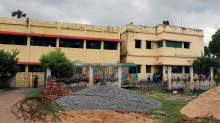|
The large majority of those who visit India may not see or recognize the grim realities that disable the lives of about 170 million people in the country’s Dalit community. For the women and girls of this community, trapped in two straitjackets of caste and gender, the constraints and barriers have few parallels. Enquiries about caste at large generally elicit one of two answers: “Oh, it is ancient and hardly matters now; it is nurtured by politicians for winning elections,” or, “It is an ancient deeply entrenched system and will take time to change.” Both answers are insufficient for the millions who have been bearing its burdens for generations and are struggling to change it, not least when we see what changes are possible in this country: independence 64 years ago, a constitution based on dignity, equality and equal opportunities for all, the transition from socialist to market economy, high economic growth, information technology, global recognition. The excuses are not justified, and one suspects that the privileged simply do not wish to change this system. Mushahar girls are, by all means, at the bottom of the bottomless pit of caste intersected by gender and many other disabilities, and to surface is next to impossible. As a member of the Mushahar community, one’s habitation is segregated: No one else would live there, nor can you live among other communities. One’s habitation is almost completely excluded from state services (or provided at the poorest quality – there may be child-care centres and schools but few teachers come or teach). The caste system denies you land and other assets. The education system has pushed out almost all from meaningful education and skills – even opportunities for unskilled work are haunted by discrimination and indignity, and any aspiration or assertion is soon quenched through humiliation or violence. Women and girls are further marginalized through gender discrimination and violence, sexual violence and alcoholism from the larger society and even within the community itself. Sister Sudha Varghese, the subject of Stephanie Nolen’s story in Saturday’s Globe and Mail, has hit upon the most critical strategy of promoting quality education among the girls from the Mushahar community in Bihar. That their families have taken the risk of sending them away from home shows their expectations from education, while the bright faces and progress made by the girls affirms the strategy’s potential. The challenges are herculean – raising the resources, managing and expanding the centres is difficult enough, but supporting and mentoring the girls is even tougher. They need support to persevere while shaking off humiliation, discrimination and negative attitudes about their “educability” and “relevance.” Higher education is an issue Sister Sudha is already beginning to worry about – who will rent them houses or hostels? Will they be exploited or face violence? Finding and retaining work will be the next level, followed by marriage – finding partners who will encourage them is a dream in itself. As the first generation to move out of the trap, these girls will need continuous hand-holding and support that their families and communities may not be in a position to provide. The path ahead is shaky and uncertain, but kudos to Sister Sudha and the girls for putting faith in human potential and taking these first steps. They are real heroines – the leaders of their community and our society. Annie Namala heads the Centre for Social Equity and Inclusion in New Delhi. ------------------------------------------------------------------------------------------------------ |
 Human-rights organizations collect more than 100,000 reports of atrocities against Dalits in this year (2005) alone. They include murders, rapes and arson attacks on Dalit communities. Only a handful of arrests are made. read more.... |




